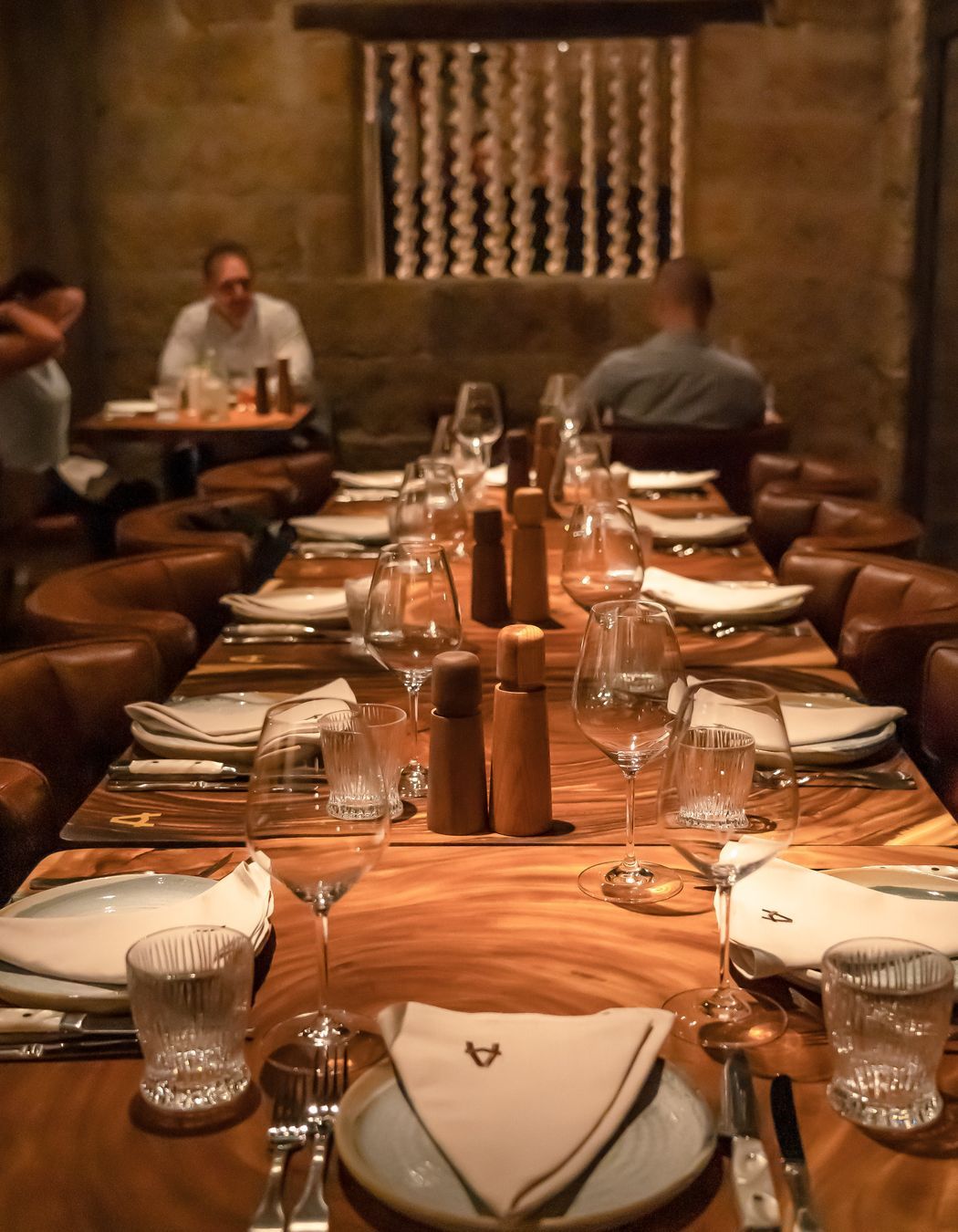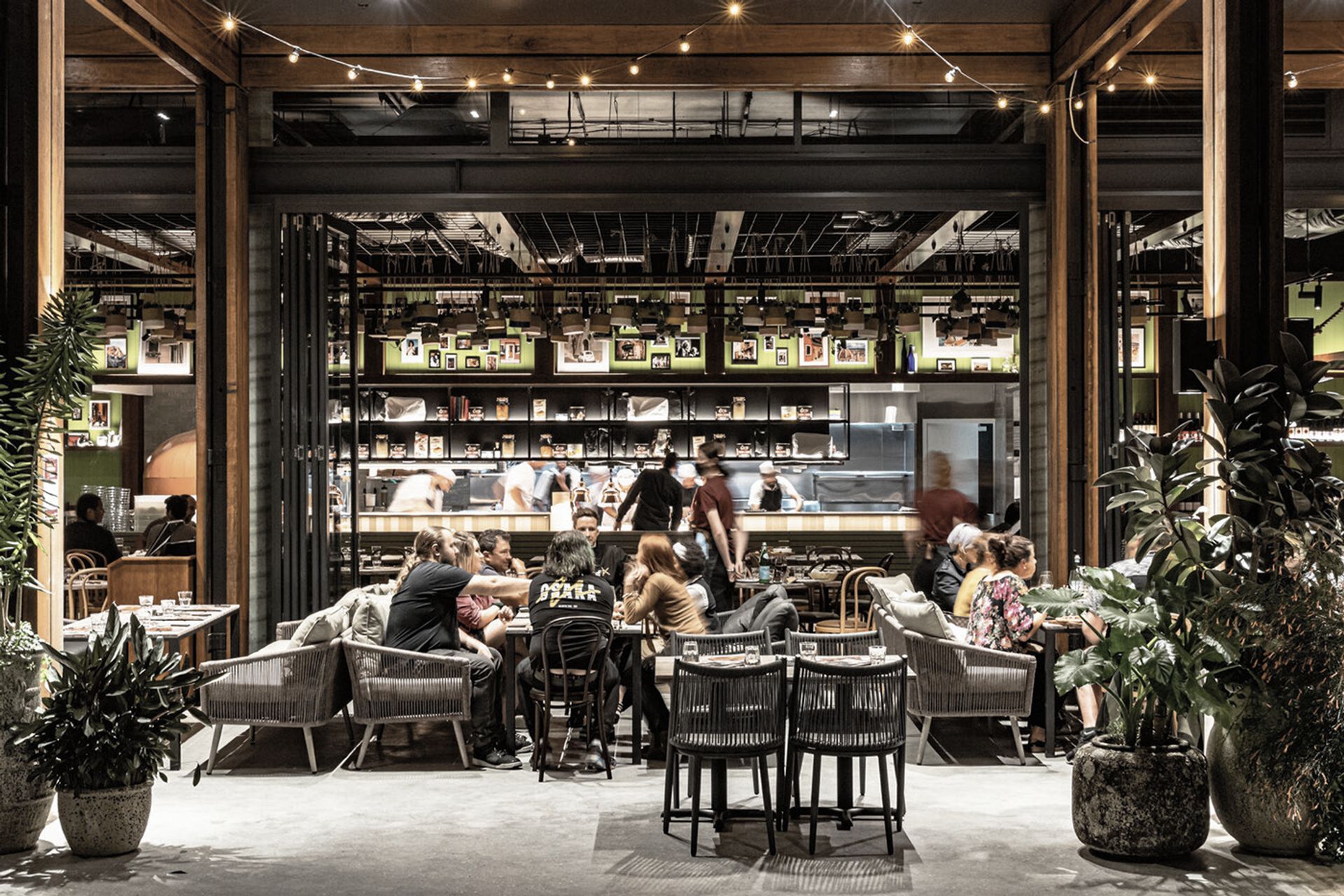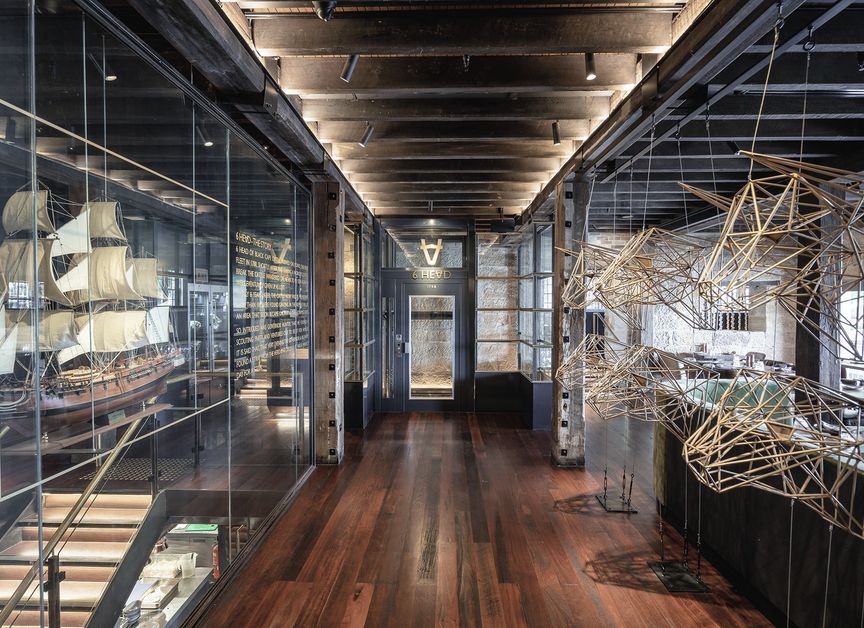6HEAD Steak Restaurant.
ArchiPro Project Summary - 6HEAD Premium Steak Restaurant: A fine dining experience in Sydney's historic Campbell's Stores, featuring repurposed timber craftsmanship and curated art installations, completed in 2019 for Seagrass Boutique Hospitality Group.
- Title:
- 6HEAD Premium Steak Restaurant
- Interior Designer:
- COOOP
- Category:
- Commercial/
- Hospitality
- Completed:
- 2019
- Client:
- Seagrass Boutique Hospitality Group
- Photographers:
- Paul ArcherDesign Partnership
The 6 Head Story
On board the 1st fleet were 1480 souls and 6 Head (hence the name) of cattle (from the Cape of Good Hope). After arriving however, the cattle were unattended during a lunch break and wondered off never to be seen again and given up as lost. However 8 years later the were found, now wild and numbering more than 100, grazing in the Nepean valley, saving the colony from starvation. The rich tapestry of that 1st journey plus the 160 year old Campbells warehouse was framed as inspiration to the design. The decision was made to meaningfully and consciously frame the various textures, stories, vignettes and vistas rather than force an entirely new fabric intervention.
The journey begins at the entrance with an installation of 6 beautifully crafted copper rod Cow Heads, a commissioned, hand built 1-30 model of the Sirius and the back story in gold letters on the glass screen wall. The ground-floor bar is hand carved from a solid block of rescued timber to mirror the timber columns and the 6 Head story chiselled in its face. In bay 11 a rope installation with 1480 sailors knots pays homage to the 1st fleet of 1480 souls.As a heritage listed building, the Campbells stores existing fabric could not be harmed in any way. No penetrations. No demolishing. This made a 240 seater commercial restaurant intervention extremely challenging.
The additional challenge was a building constructed in a time before spirit levels, in other words, nothing was horizontal or plumb. Services such as lighting, air-conditioning, plumbing and drainage needed to be inserted without any penetrations. Above all the intervention needed to answer to a fully functional operational, commercially viable, 240 seater restaurant space. Adjacent to The Hyatt, construction needed to be carried out without any noise or light pollution.
The solution was to make everything inserted "float" as a second skin and for the old lines to dictate the new lines in order to look correct even if out of plumb. Thus, everything was handmade, crafted and adjusted on site rather than in a factory. Spirit levels were banned onsite. The shell had one vertical stack to accommodate all services. All air-conditioning were loose laid rigid ducts on top of existing timber beams. As were the lighting tracks. Removing tiles in Bay 11 damaged the sandstone underneath and thus the rope installation was conceived as visual layers over walls.




Founded
Projects Listed

COOOP.
Other People also viewed
Why ArchiPro?
No more endless searching -
Everything you need, all in one place.Real projects, real experts -
Work with vetted architects, designers, and suppliers.Designed for Australia -
Projects, products, and professionals that meet local standards.From inspiration to reality -
Find your style and connect with the experts behind it.Start your Project
Start you project with a free account to unlock features designed to help you simplify your building project.
Learn MoreBecome a Pro
Showcase your business on ArchiPro and join industry leading brands showcasing their products and expertise.
Learn More







